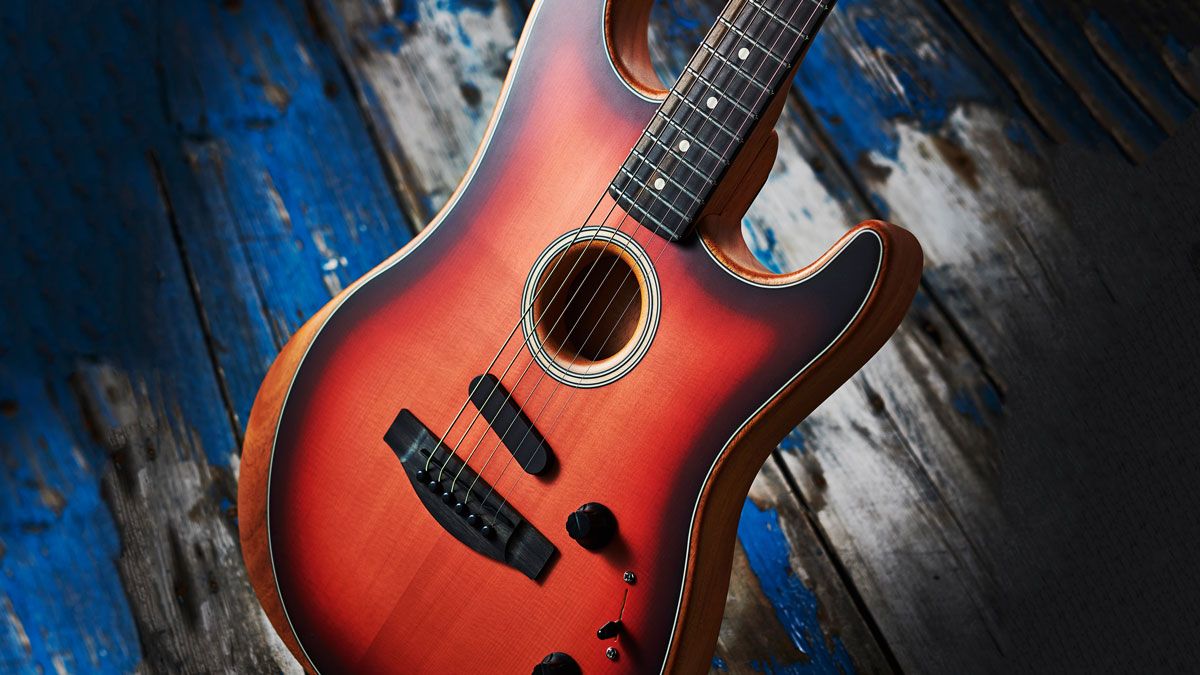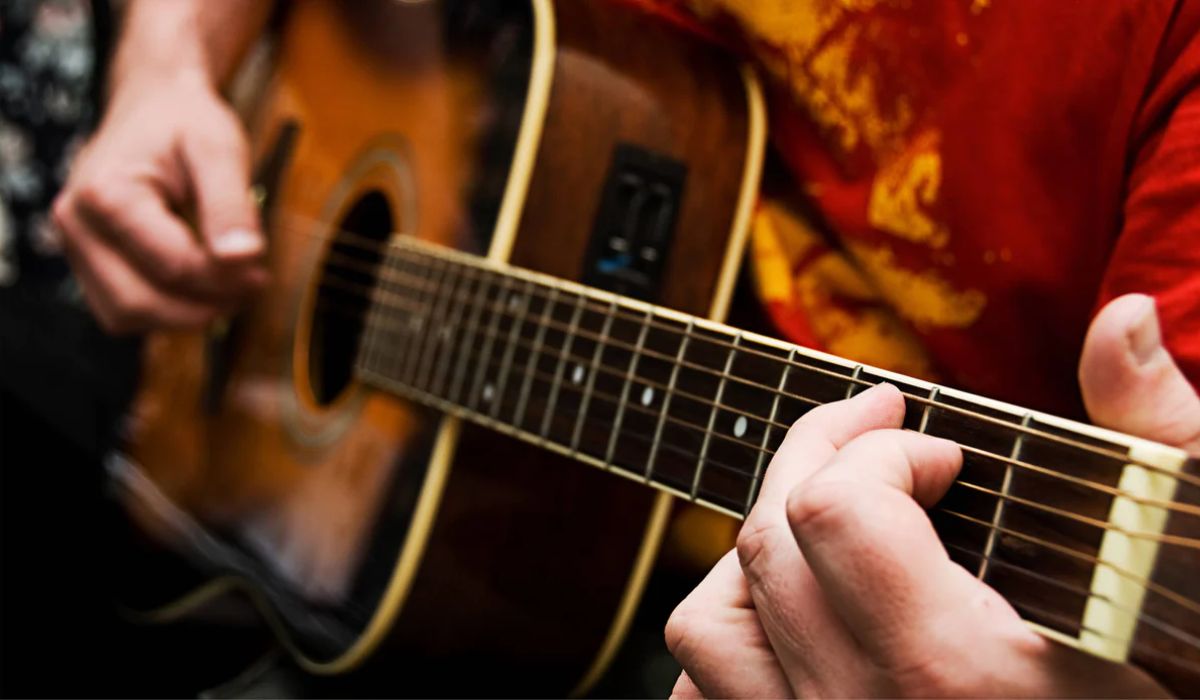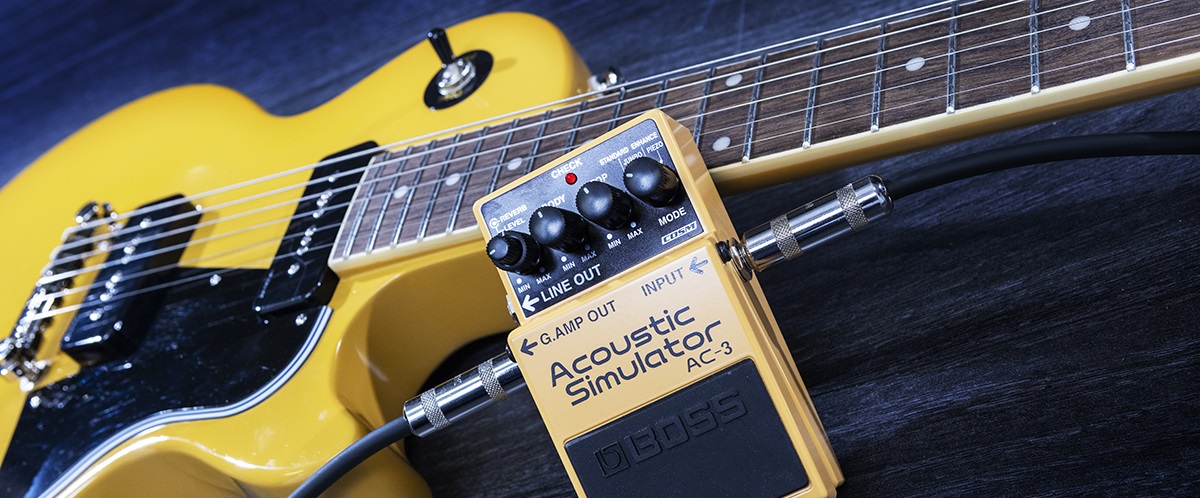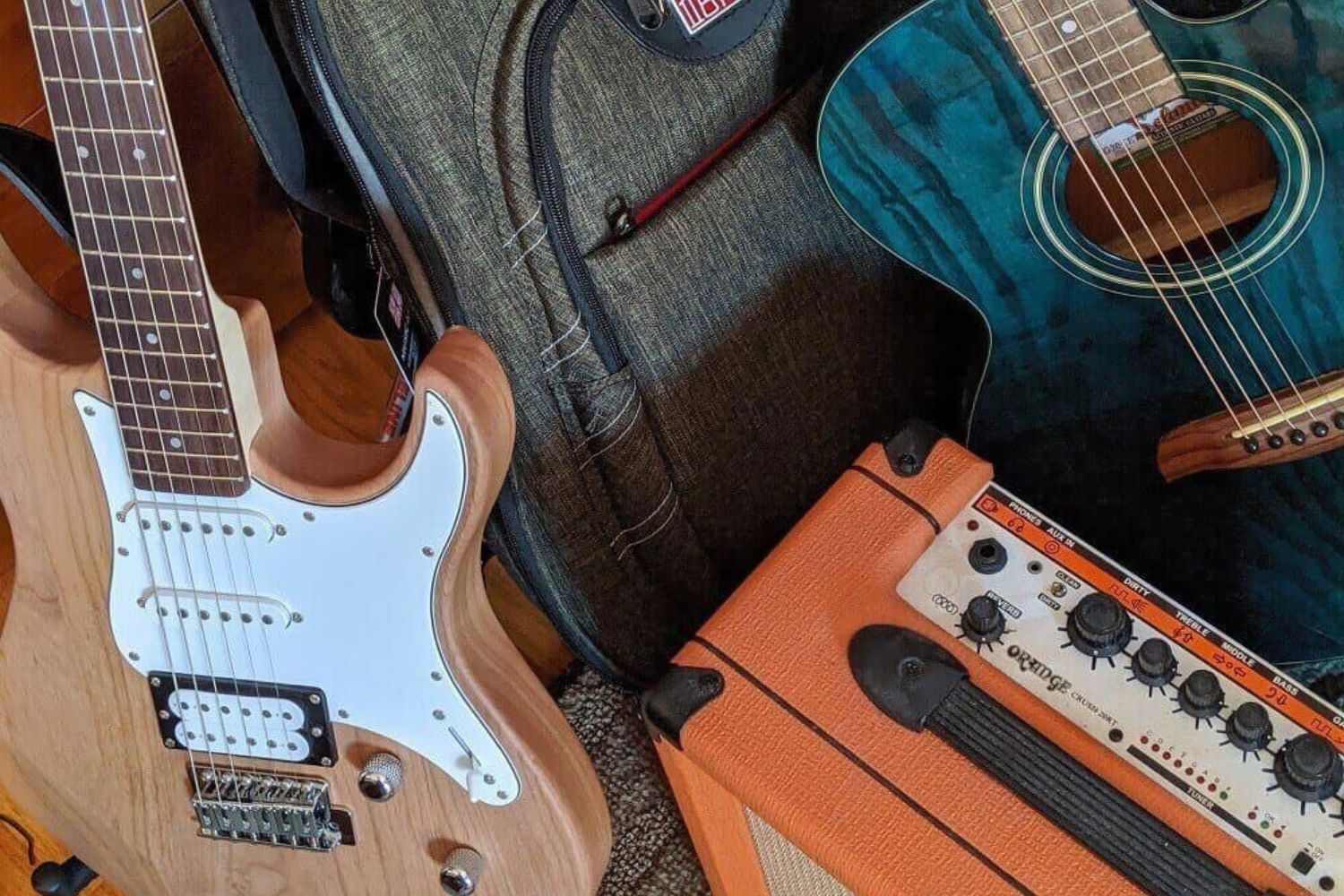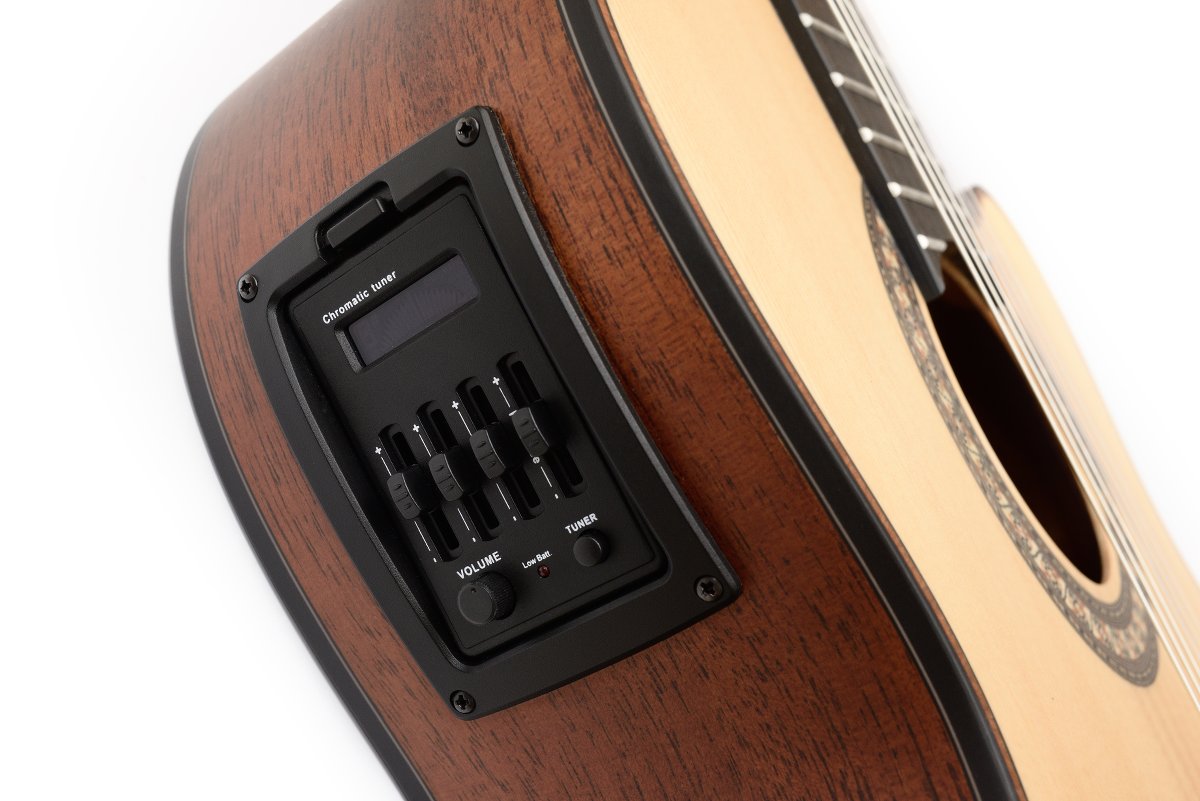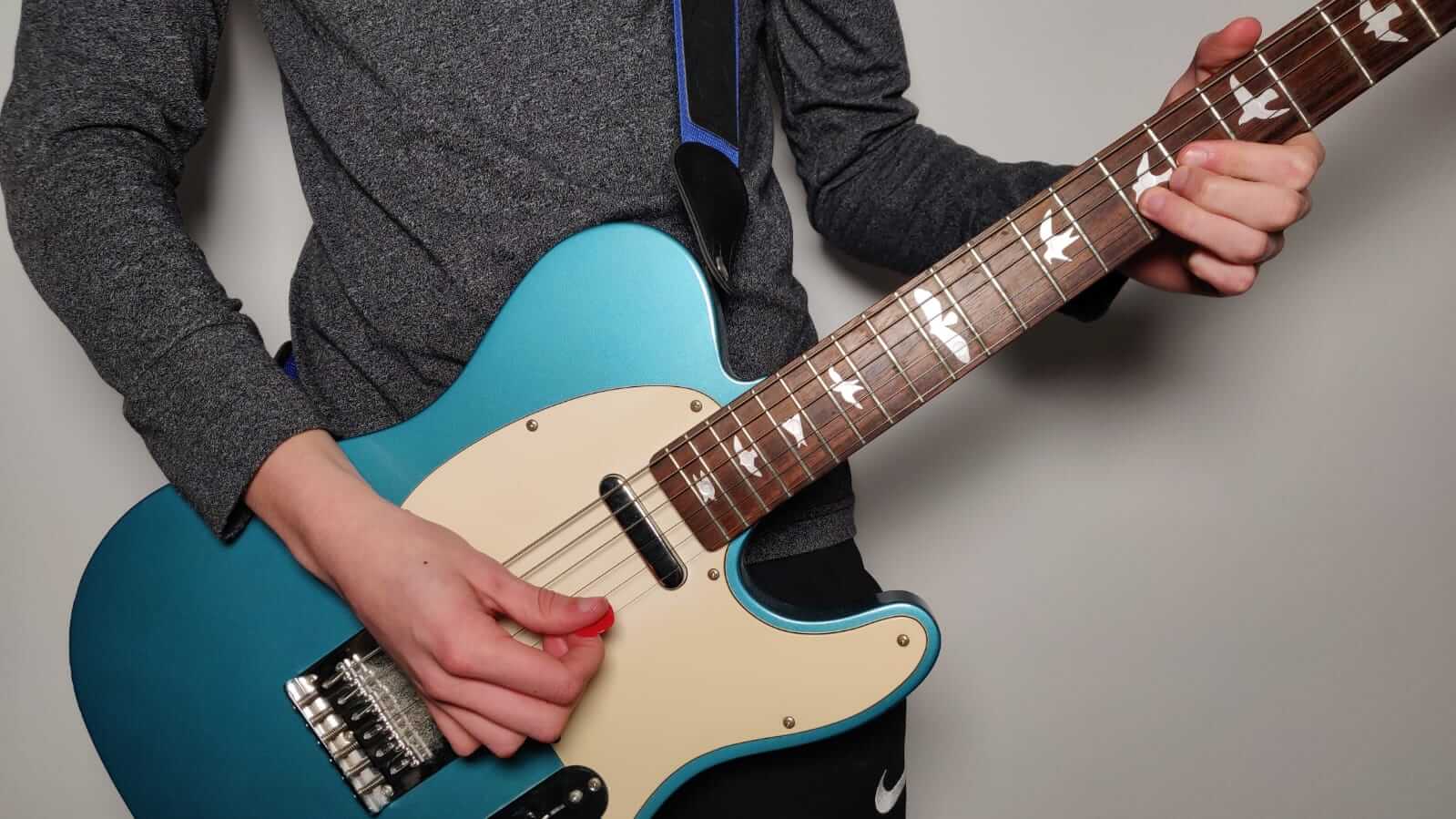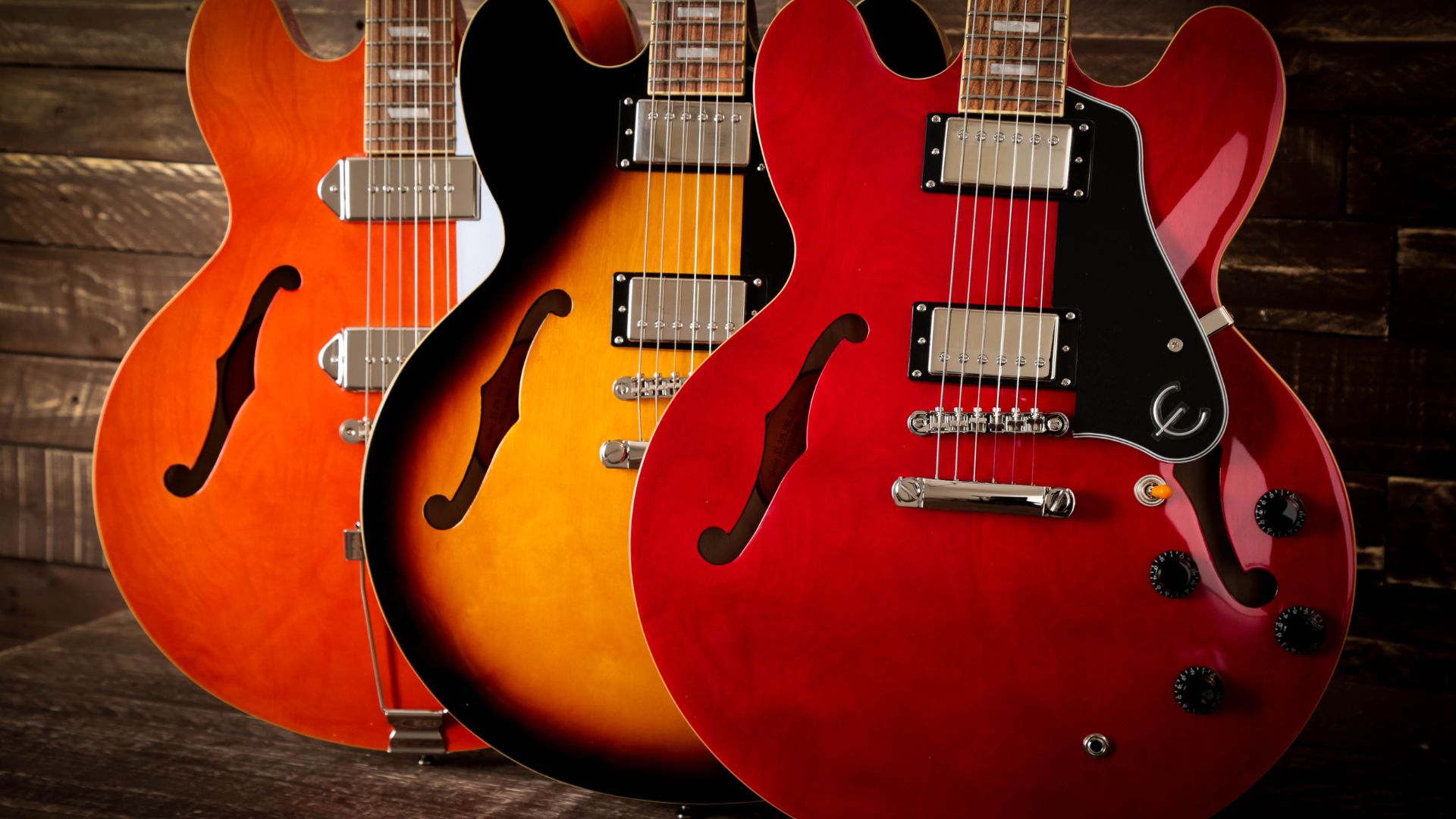Introduction
Welcome to the wonderful world of electric acoustic guitars! Whether you’re a seasoned guitarist or just starting out, an electric acoustic guitar can open up a whole new world of sonic possibilities. This versatile instrument combines the best of both electric and acoustic worlds, allowing you to enjoy the warm tones of an acoustic guitar while benefitting from the versatility and amplified power of an electric guitar.
Electric acoustic guitars have gained immense popularity in recent years, thanks to their ability to produce a wide range of sounds suitable for any genre of music. Whether you’re strumming along to folk and country tunes or unleashing blistering solos in rock and metal, an electric acoustic guitar has got you covered.
In this article, we will explore the fascinating world of electric acoustic guitars. We will delve into what exactly an electric acoustic guitar is, how it differs from an electric guitar, and how it operates. We will also provide you with essential tips on setting up your electric acoustic guitar, choosing the right amplifier, proper playing techniques, and more.
So, if you’ve ever been curious about exploring the capabilities of an electric acoustic guitar or are in the market for a new instrument, this article is for you. Get ready to embark on a musical journey that combines the best of both acoustic and electric worlds and discover the joys of playing an electric acoustic guitar.
What is an Electric Acoustic Guitar?
An electric acoustic guitar, also known as an electro-acoustic guitar, is a type of guitar that is designed to be played either acoustically or plugged into an amplifier. It is essentially an acoustic guitar that has been equipped with built-in pickups and preamp systems, allowing the sound to be amplified and modified.
At first glance, an electric acoustic guitar may look similar to a traditional acoustic guitar. It typically features a hollow or semi-hollow body with a soundhole and a neck with frets. The main difference lies in the addition of electronics, which enable the guitar to produce a louder and more versatile sound.
The pickups of an electric acoustic guitar are responsible for capturing the vibrations of the strings and converting them into an electrical signal. These pickups can be either piezo pickups or magnetic pickups, or a combination of both. Piezo pickups are commonly found on the bridge of the guitar and provide a more natural and acoustic-like tone, while magnetic pickups, similar to those found on electric guitars, offer a brighter and more amplified sound.
Additionally, electric acoustic guitars are equipped with preamp systems that include tone and volume controls, EQ settings, and sometimes even built-in digital effects. These controls allow the guitarist to shape the sound to their liking and achieve a wide range of tones, from warm and mellow to bright and crispy.
The versatility of an electric acoustic guitar makes it an ideal choice for many scenarios. Whether you’re performing on stage, recording in a studio, or simply playing at home, an electric acoustic guitar can adapt to any situation. The ability to switch between acoustic and amplified sounds with the flick of a switch makes it a valuable instrument for musicians of all genres.
Overall, an electric acoustic guitar combines the rich, natural tones of an acoustic guitar with the amplified power and versatility of an electric guitar. It is a versatile instrument that allows musicians to experiment with different sounds and styles, making it a popular choice among guitar enthusiasts worldwide.
The Difference Between an Electric Acoustic Guitar and an Electric Guitar
While an electric acoustic guitar and an electric guitar share some similarities, there are distinct differences between the two that set them apart. Understanding these differences can help you decide which instrument is best suited for your musical preferences and needs.
One of the primary differences between an electric acoustic guitar and an electric guitar lies in their sound production. An electric guitar relies on pickups and an amplifier to produce sound, whereas an electric acoustic guitar can be played both acoustically and amplified. The hollow or semi-hollow body of an electric acoustic guitar allows it to project sound without the need for external amplification, giving it a natural and resonant tone even when played unplugged.
Furthermore, the design and construction of the two types of guitars differ. Electric guitars tend to have solid bodies, typically made of solid wood or composite materials, which contribute to their signature sustain and resonance. Electric acoustic guitars, on the other hand, often have hollow or semi-hollow bodies, similar to those of acoustic guitars. This design difference affects the overall sound and tonal characteristics of each instrument.
Another noticeable distinction is the pickups used in each guitar. Electric guitars primarily utilize magnetic pickups, which are positioned under the strings and produce a magnetic field that senses the string vibrations. These pickups capture a bright and powerful tone, well-suited for genres like rock, blues, and metal. In contrast, electric acoustic guitars commonly feature piezo pickups, which detect the vibrations of the guitar’s bridge. Piezo pickups capture a warmer and more natural sound, reminiscent of an acoustic guitar.
When it comes to playing techniques, electric guitars often have thinner necks and lower action, making them more favorable for fast-paced playing styles like lead guitar solos and intricate riffs. Electric acoustic guitars tend to have wider necks and higher action, offering a more familiar feel for acoustic guitarists and accommodating playing techniques like fingerpicking and strumming.
In terms of amplification, electric guitars require an amplifier to produce enough volume for performances, recordings, or practices. Conversely, electric acoustic guitars can be played without an amplifier, making them suitable for intimate settings or quiet practice sessions. However, when amplified, electric acoustic guitars can harness the benefits of their built-in electronics and achieve a louder and more versatile sound.
Overall, the differences between an electric acoustic guitar and an electric guitar lie in their sound production, construction, pickups, playing techniques, and amplification requirements. While electric guitars excel in genres that prioritize powerful and distorted tones, electric acoustic guitars offer the best of both acoustic and electric worlds, providing a versatile instrument capable of producing a range of sounds suitable for various styles of music.
How Does an Electric Acoustic Guitar Work?
Understanding how an electric acoustic guitar works can give you valuable insight into the inner workings of this fascinating instrument. While it may seem complex, the basic principle behind its operation is relatively straightforward.
At its core, an electric acoustic guitar works by utilizing pickups to capture and convert the string vibrations into an electrical signal. These pickups are typically located on or near the bridge of the guitar. There are two main types of pickups used in electric acoustic guitars: piezo pickups and magnetic pickups.
Piezo pickups are commonly found on the bridge of the guitar and work by converting the mechanical vibrations of the strings into electrical voltage. This is achieved through the use of piezoelectric crystals. When the strings vibrate, they exert pressure on these crystals, which then generate an electrical signal. Piezo pickups are known for their ability to produce a warm and natural acoustic sound, similar to that of a traditional acoustic guitar.
In contrast, magnetic pickups, similar to those used in electric guitars, use magnets and coils to produce an electrical signal. Magnetic pickups consist of magnetic pole pieces and a coil of wire. As the strings vibrate, they disturb the magnetic fields created by the magnets, inducing an electrical current in the coil. This generates a signal that is then sent to an amplifier or audio system. Magnetic pickups tend to produce a brighter and more amplified sound, making them ideal for genres that require a stronger presence.
Once the vibrations are converted into an electrical signal, it is then sent to a preamp system located within the guitar. The preamp is responsible for controlling the volume, tone, and other parameters of the signal. It allows the guitarist to shape the sound to their liking, applying equalization (EQ) adjustments and sometimes even built-in digital effects.
From the preamp, the signal is either sent directly to an amplifier through a cable or wirelessly transmitted if the guitar is equipped with wireless technology. The amplifier then amplifies the electrical signal and converts it into audible sound. Through the amplifier, the guitarist can unleash the full potential of their electric acoustic guitar, allowing the tones to be projected at higher volumes and tailored to specific sonic preferences.
It’s important to note that electric acoustic guitars can also be played acoustically without the need for amplification. Thanks to their hollow or semi-hollow bodies, these guitars generate a certain level of volume and projection naturally. However, when played acoustically, the built-in pickups are not utilized, and the sound remains unamplified.
In summary, the working principle of an electric acoustic guitar involves the use of pickups to convert string vibrations into electrical signals. These signals are then processed by a preamp and sent to an amplifier or audio system. This allows for the amplification and customization of the guitar’s sound, providing musicians with a versatile and dynamic instrument capable of producing a wide range of tones.
Steps to Set Up Your Electric Acoustic Guitar
Properly setting up your electric acoustic guitar is essential to ensure that it plays and sounds its best. Whether you’re a beginner or an experienced guitarist, following these steps will help you optimize the instrument for optimal performance:
- Check the guitar’s condition: Inspect your guitar for any visible damage, loose parts, or worn-out strings. Address any necessary repairs or replacements before proceeding to the setup process.
- Tune the guitar: Begin by tuning your guitar to the desired pitch. Use a reliable tuner to ensure accurate tuning, as it is the foundation for everything that follows in the setup process.
- Adjust the guitar’s truss rod: The truss rod is a metal rod that runs through the neck of the guitar. It helps counteract the tension exerted by the strings and ensures proper neck relief. If needed, make small adjustments to the truss rod to achieve a straight and level neck.
- Set the guitar’s action: The action refers to the height of the strings above the fretboard. Adjust the saddle height or the bridge height screws to achieve the desired action. Higher action can offer more sustain and volume, while lower action allows for faster and more comfortable playing.
- Check and adjust the guitar’s intonation: Intonation refers to the accuracy of the guitar’s pitch at different points on the fretboard. Use an electronic tuner and compare the open string pitch to the pitch at the 12th fret. If necessary, use the saddle adjustments to correct any intonation issues.
- Inspect and lubricate the guitar’s nut: Examine the nut for any signs of wear or binding. Apply a small amount of graphite or lubricant to the grooves of the nut to reduce friction and ensure smooth string movement.
- Clean and maintain the guitar: Wipe down the guitar’s body, neck, and fretboard using a clean cloth. Use appropriate guitar cleaning products for any stubborn dirt or grime. Additionally, clean and condition the fretboard with a suitable fretboard conditioner to keep it in optimal condition.
- Check the electronics and connections: If your electric acoustic guitar has built-in electronics, inspect the wiring, connections, and controls. Ensure that everything is securely connected and functioning properly. Clean the input jack and other connections to remove any dust or debris.
It’s important to note that the setup process may vary slightly depending on the specific model and manufacturer of your electric acoustic guitar. Consult the guitar’s manual or seek guidance from a professional guitar technician if you encounter any difficulties or have specific questions.
By following these steps and maintaining regular guitar maintenance, you can ensure that your electric acoustic guitar is in optimal playing condition, allowing you to fully enjoy its rich sound and versatility.
Choosing the Right Amplifier for Your Electric Acoustic Guitar
When it comes to amplifying your electric acoustic guitar, selecting the right amplifier is crucial in achieving the desired sound and maximizing the potential of your instrument. With numerous options available on the market, it’s important to consider several factors before making your decision:
1. Power and Size: Consider the power and size of the amplifier. For smaller venues and home use, a lower-wattage amplifier will suffice. However, for larger venues or performances, a more powerful amplifier might be necessary to ensure sufficient volume and projection.
2. Amplifier Type: There are various amplifier types to choose from, including solid-state, tube (valve), and digital amps. Each type offers distinct tonal characteristics and features. Solid-state amps are reliable, cost-effective, and offer clean and accurate sound. Tube amps produce warm and rich tones, but they tend to be louder and require more maintenance. Digital amps provide a wide range of effects and amp simulations, offering versatility and convenience.
3. Channels and Controls: Consider the number of channels and the control options available on the amplifier. Multiple channels allow you to switch between different tones or effects easily. Look for controls that allow you to adjust the volume, EQ settings (bass, middle, treble), reverb, and other desired parameters.
4. Connectivity Options: Ensure that the amplifier has the necessary connectivity options for your requirements. Most electric acoustic guitars can be connected to an amplifier using a 1/4″ instrument cable. Additionally, some amplifiers offer XLR or balanced inputs, which are useful for connecting to a PA system or recording equipment.
5. Portability: Consider the portability factor, especially if you plan to transport the amplifier frequently. Look for lightweight and compact amplifiers that are easy to carry and transport without sacrificing sound quality.
6. Budget: Set a budget range and stick to it. Amplifiers come in a wide price range, and it’s essential to find one that fits your budget while still meeting your needs and providing the desired sound quality.
7. Test and Compare: Whenever possible, try out various amplifiers with your electric acoustic guitar before making a purchase. This allows you to hear how the amplifier interacts with your instrument and determine if it produces the desired tone and sound quality.
Ultimately, the right amplifier for your electric acoustic guitar should complement its unique characteristics and allow you to achieve your desired sound. Consider your specific needs, playing style, and the venues in which you plan to perform. By thoroughly researching and testing different options, you can find an amplifier that brings out the best in your electric acoustic guitar and enhances your overall playing experience.
How to Properly Hold an Electric Acoustic Guitar
Properly holding your electric acoustic guitar is essential for maintaining comfort, technique, and playing efficiency. Whether you’re sitting or standing, following these guidelines will help you establish a solid foundation and enjoy a comfortable playing experience:
1. Sitting Position:
- Sit on a chair with a straight back or use a guitar stool to support your lower back.
- Rest the guitar’s lower bout on your right thigh (for right-handed players) or left thigh (for left-handed players).
- Angle the guitar slightly upward towards your chest, ensuring that it remains balanced and secure.
- Keep your back straight and relaxed, allowing for proper posture and breathing.
2. Standing Position:
- Adjust the guitar strap to a comfortable height, allowing the guitar to hang at your preferred position.
- Ensure that the guitar’s body is centered and balanced on your body, with the neck pointing upwards.
- Distribute the weight of the guitar evenly across your body, using your shoulder and back muscles to support the instrument.
- Stand with good posture, keeping your shoulders relaxed and your spine straight.
3. Hand Placement:
- Place your left hand (for right-handed players) or right hand (for left-handed players) around the neck of the guitar.
- Hold the neck with your thumb resting comfortably on the back and your fingers wrapping around the fingerboard.
- Avoid gripping the neck too tightly, as it can restrict your finger mobility and cause unnecessary tension.
- Keep your fingers curved and close to the fretboard, ready to press the strings down for chords or notes.
4. Arm and Wrist Position:
- Allow your strumming or picking arm to hang naturally from your shoulder.
- Position your forearm at a comfortable angle, allowing for fluid strumming or picking motions.
- Maintain a relaxed and loose wrist, allowing for smooth and efficient movements.
- Avoid excessive tension in your arm or wrist, as it can hinder your playing technique and lead to discomfort or strain.
5. Guitar Stability:
- Ensure that the guitar is securely positioned against your body.
- Use your forearm and body to provide stability, allowing for better control and reduced strain on your wrist.
- Avoid excessive movement or unnecessary tension that can cause the guitar to shift or wobble.
- Regularly check your grip and posture during playing to maintain proper stability.
Remember that these guidelines are general recommendations, and finding a comfortable and suitable position may vary for each individual. It’s crucial to experiment and adjust your posture and technique to find what works best for you. Additionally, taking breaks and practicing good ergonomics can help prevent fatigue and promote overall playing enjoyment.
By mastering the proper guitar holding technique, you can improve your playing comfort, prevent strain or injury, and develop better control over your electric acoustic guitar.
Understanding the Controls on Your Electric Acoustic Guitar
Electric acoustic guitars are equipped with various controls that allow you to shape and adjust the sound produced by the instrument. Familiarizing yourself with these controls will enable you to have greater control over your tone and achieve the desired sound. Let’s take a look at the common controls found on electric acoustic guitars:
1. Volume Control: The volume control adjusts the output volume of your guitar. Turning it clockwise increases the volume, while turning it counterclockwise decreases it. Use the volume control to balance your guitar’s volume with other instruments in a band or adjust the overall output level during performances.
2. Tone Controls: Most electric acoustic guitars have tone controls, typically in the form of knobs or sliders. These controls allow you to adjust the frequencies of the sound and shape the tonal characteristics of your guitar. The most common tone controls include bass, middle, and treble. Turning them clockwise boosts the respective frequencies, while turning them counterclockwise cuts or reduces them.
3. EQ Controls: Some electric acoustic guitars provide more advanced equalizer (EQ) controls. These controls allow for more precise tonal adjustments, usually in the form of sliders or knobs for specific frequency bands. A typical EQ on an electric acoustic guitar may include sliders or knobs for bass, midrange, and treble frequencies. Use the EQ to further shape your guitar’s sound to match different musical styles or to compensate for the acoustic characteristics of different performance environments.
4. Pickup Selector Switch: If your electric acoustic guitar has multiple pickups, you may have a pickup selector switch. This switch allows you to choose which pickup or combination of pickups is active. Different pickups can produce varied tones, so experiment with different pickup combinations to explore different sounds and find the one that suits your playing style and musical genre.
5. Built-in Effects: Some electric acoustic guitars offer built-in effects such as reverb, chorus, or delay. These effects can enhance and add depth to your sound without the need for external pedals or processors. Experiment with these effects to add ambiance and texture to your playing.
6. Onboard Tuner: Many electric acoustic guitars come equipped with an onboard tuner, which is a convenient tool for quick and easy tuning. The tuner may be activated by a button or integrated into one of the knobs. Utilize the onboard tuner to ensure your guitar is always in tune, especially during live performances or recording sessions.
It’s important to familiarize yourself with the specific controls on your electric acoustic guitar, as they may vary depending on the make and model of your instrument. Refer to your guitar’s manual or manufacturer’s website for detailed information on the controls and their functionality.
By understanding and utilizing these controls, you can customize and shape your guitar’s sound to your liking, allowing you to explore a wide range of tonal possibilities with your electric acoustic guitar.
Techniques for Playing an Electric Acoustic Guitar
Playing an electric acoustic guitar offers a vast array of techniques that can enhance your playing style and allow you to fully explore the instrument’s sonic potential. Whether you’re a beginner or an experienced guitarist, incorporating these techniques into your repertoire can take your playing to new heights:
1. Strumming: Strumming is a fundamental technique for playing chords and rhythm patterns on an electric acoustic guitar. Hold your pick between your thumb and index finger, using a relaxed grip. Practice strumming evenly across the strings, keeping your wrist loose and allowing the pick to glide smoothly across the strings. Vary your strumming patterns to add dynamics and rhythm to your playing.
2. Fingerstyle: Fingerstyle playing involves using your fingers instead of a pick to pluck the strings. This technique allows for greater control and expressiveness when playing melodies, chords, or intricate arpeggios. Experiment with using your thumb to hit the bass notes and the rest of your fingers to pluck the higher strings simultaneously.
3. Hybrid Picking: Hybrid picking combines both fingerpicking and pick playing. It involves using a pick to strike the lower strings while using your fingers to pluck the higher strings. This technique provides a versatile approach, allowing you to alternate between strumming and melodic playing seamlessly.
4. Palm Muting: Palm muting is achieved by lightly resting the palm of your picking hand against the strings near the bridge while playing. This produces a muted or percussive sound, adding a rhythmic and percussive element to your playing. Experiment with different degrees of palm pressure to adjust the level of muting and create various tones.
5. Bending and Vibrato: Bending involves pushing or pulling a string sideways to change the pitch. When executing a bend, use your fingers to push or pull the string toward the desired pitch. Vibrato involves rapidly and subtly bending the string back and forth to create a controlled pitch fluctuation. Mastering bending and vibrato adds expressiveness and emotion to your playing.
6. Hammer-Ons and Pull-Offs: Hammer-ons and pull-offs are techniques used to create smooth and seamless legato passages. A hammer-on involves playing a note by hammering down onto the string with a finger of the fretting hand, without plucking the string. A pull-off involves smoothly releasing a fretted note to a lower fret or an open string, creating a connected and fluid sound.
7. Slides and Fretboard Ornaments: Slides involve smoothly transitioning from one note to another by sliding your finger along the fretboard. This technique adds a vocal-like quality to your playing. Additionally, fretboard ornaments such as trills or bends can be used to embellish your melodies and create added interest.
8. Tapping: Tapping involves using the fingers of your picking hand to tap the strings against the fretboard, producing fast and intricate notes. This technique is commonly associated with electric guitar playing but can also be incorporated into electric acoustic guitar playing, adding an element of flair and virtuosity to your playing.
Remember, it takes time and practice to master these techniques. Start slowly and gradually increase your speed as you become more comfortable. Experiment with different combinations of techniques to create your unique playing style.
Whether you’re strumming along to your favorite songs, fingerpicking intricate melodies, or exploring more advanced techniques, these techniques will expand your skill set and unlock a world of creative possibilities on your electric acoustic guitar.
Common Mistakes to Avoid When Using an Electric Acoustic Guitar
Playing an electric acoustic guitar is an enjoyable and rewarding experience, but it’s important to be aware of common mistakes that can hinder your progress and affect your playing. By identifying and avoiding these mistakes, you can enhance your skills and make the most out of your instrument. Here are some common mistakes to watch out for:
1. Neglecting Proper Maintenance: One major mistake is neglecting proper maintenance of your electric acoustic guitar. Failing to regularly clean and maintain your instrument can lead to string corrosion, dirt buildup, and overall diminished sound quality. Make it a habit to clean your guitar regularly, change strings when necessary, and properly store your instrument to ensure its longevity and optimal performance.
2. Incorrect Technique: Incorrect technique can hinder your playing progress and even cause physical strain or injuries. Some common technique mistakes include improper hand positioning, using excessive force or tension, and neglecting proper posture. Invest time in learning proper techniques, such as hand placement, posture, and proper picking and fretting techniques. Consider taking lessons from a qualified instructor to ensure you develop good habits from the beginning.
3. Poor Tuning: Failing to regularly tune your electric acoustic guitar is a mistake that can result in an unpleasant and out-of-tune sound. Even the best instrument will not sound good if it’s not properly tuned. Invest in a reliable tuner and make it a habit to tune your guitar before each playing session or performance. Regularly check your tuning throughout your practice to maintain accuracy.
4. Over-Reliance on Effects: Effects can enhance the sound of your electric acoustic guitar, but relying too heavily on them can mask poor playing technique and become a crutch. It’s important to develop your playing skills and sound without relying solely on effects. Focus on developing your tone and dynamics through proper playing technique before relying on effects to enhance your sound.
5. Neglecting to Experiment with Different Sounds: Electric acoustic guitars offer a broad range of tones and sounds. Neglecting to experiment and explore different sounds can limit your playing experience and potential. Take the time to experiment with different pickup combinations, tone settings, and effects to find your unique sound and expand your creative possibilities.
6. Playing at Inappropriate Volume Levels: Playing your electric acoustic guitar at excessively high or low volumes for the situation can be a mistake. Playing too loudly in a quiet setting can be disruptive, while playing too softly in a band setting can result in your guitar getting drowned out. Understand the context in which you’re playing, and adjust your volume accordingly to ensure your instrument is heard and balanced with other musicians.
7. Neglecting to Warm Up: It’s essential to warm up your fingers, hands, and arms before playing intensively. Neglecting to warm up can lead to muscle strain, poor technique, and diminished dexterity. Take a few minutes to stretch your fingers, wrists, and arms, and practice some warm-up exercises to prepare your body for playing.
Avoiding these common mistakes will contribute to your growth as a guitarist and enhance your overall playing experience with your electric acoustic guitar. Always strive for improvement, seek guidance when needed, and enjoy the journey of mastering this versatile and captivating instrument.
Tips and Tricks for Getting the Best Sound out of Your Electric Acoustic Guitar
Getting the best sound out of your electric acoustic guitar involves a combination of factors, including proper technique, equipment setup, and overall care for your instrument. By following these tips and tricks, you can enhance the sound quality and overall experience of playing your electric acoustic guitar:
1. Experiment with Different Strings: Strings have a significant impact on the sound of your guitar. Try different brands and gauges to find the ones that suit your playing style and desired tone. Lighter gauge strings tend to be easier to play, while heavier gauge strings can offer more volume and sustain.
2. Optimize the Action and Intonation: Take the time to set up your guitar’s action and intonation properly. Adjust the action to achieve a comfortable string height, allowing for easy fretting without excessive buzzing. Fine-tune the intonation to ensure accurate pitch across all the frets. A properly set-up instrument will result in better tone and playability.
3. Find the Sweet Spot: Experiment with the placement of your picking hand and the distance from the bridge to find the sweet spot that produces the best tone. Moving closer to the bridge produces a brighter sound, while moving towards the neck yields warmer tones. Play around with different hand positions to discover the sweet spot for your desired sound.
4. Utilize Different Playing Techniques: Explore various playing techniques, such as fingerpicking, strumming, palm muting, or slides, to add diversity and dynamics to your sound. Each technique offers unique tonal characteristics and can be used to enhance different musical styles and genres. Practice and incorporate these techniques into your playing to expand your sonic possibilities.
5. Experiment with Pickup Positions: If your guitar has multiple pickups, try different combinations and positions to find the ones that produce the sound you desire. Each pickup offers a different tonal quality and may be suitable for specific playing styles or genres. Explore the versatility of your guitar’s pickups and adjust them accordingly to achieve the desired sound for each situation.
6. Fine-Tune the EQ Settings: Use the EQ controls on your guitar or amplifier to shape your tone. Adjust the bass, midrange, and treble settings to achieve a balanced and well-rounded sound. Experiment with different EQ settings to find your preferred tonal palette for different playing styles and venues.
7. Acoustic Environment: Be mindful of the environment in which you are playing. Different rooms or performance spaces can greatly impact the sound of your guitar. Experiment with positioning, use of room acoustics, and microphone placement when performing or recording to optimize the sound quality in different settings.
8. Regular Maintenance: Take proper care of your instrument by cleaning it regularly and maintaining the strings, fretboard, and hardware. Keep the guitar in a suitable environment and protect it from extreme temperature and humidity changes. Regular maintenance ensures the longevity of your guitar and consistent sound quality.
Remember, achieving the best sound from your electric acoustic guitar requires a blend of technical skill, equipment knowledge, and experimentation. Don’t be afraid to explore different techniques, settings, and equipment options to develop your unique sound and make the most out of your instrument.
Conclusion
Congratulations! You have now gained valuable insights into using an electric acoustic guitar. This versatile instrument combines the rich and warm tones of an acoustic guitar with the amplified power and flexibility of an electric guitar. By understanding its unique features, you can unlock a world of sonic possibilities and create captivating music.
Throughout this article, we explored what an electric acoustic guitar is, how it differs from an electric guitar, and how it works. We also discussed important steps in setting up your instrument, choosing the right amplifier, and understanding the controls to maximize your playing experience.
We delved into techniques for playing an electric acoustic guitar, including strumming, fingerpicking, and various advanced techniques like bending, tapping, and slides. It’s important to cultivate proper technique and explore different playing styles to add depth and variety to your music.
We also covered common mistakes to avoid, such as neglecting maintenance, poor tuning, and over-reliance on effects. By being aware of these pitfalls, you can overcome them and continue to grow as a guitarist.
Lastly, we provided tips and tricks to help you get the best sound out of your electric acoustic guitar. From experimenting with strings and pickup positions to optimizing action and intonation, attention to these details will elevate your playing and amplification experience.
Remember, mastering the electric acoustic guitar takes time, practice, and patience. Embrace the journey, continue to expand your skills, and allow your creativity to flourish. Whether you’re strumming chords, picking intricate melodies, or rocking out with a band, your electric acoustic guitar will be a faithful companion, ready to bring your musical visions to life.









